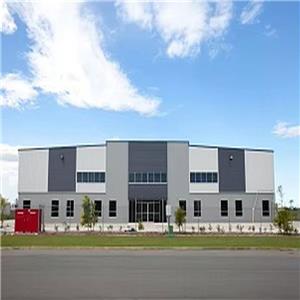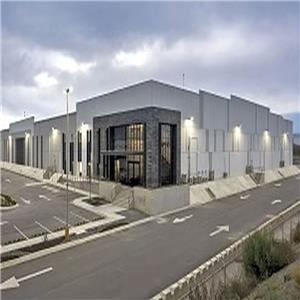Canadian Trade Leader Tours Shenyang Meituo Steel Structure Factory, Opening Dialogue on Future Cooperation
On a bright autumn morning in late September, the usually quiet industrial park on the northern edge of Shenyang received an unusual guest. The President of a Canadian trade association, leading a small team of industry representatives, walked into the gates of Shenyang Meituo Steel Structure Co., Ltd. to begin a day-long visit that blended inspection, dialogue, and cautious exploration of future cooperation.
“This is my first time in northeast China,” the president remarked as he stepped into the factory’s main hall. “But it certainly will not be the last.”
The trip, according to people close to the delegation, had been planned for months. Canadian developers are facing rising costs at home and a shortage of locally produced steel components. Against that backdrop, Chinese suppliers—particularly those with proven international track records—have come under the spotlight.
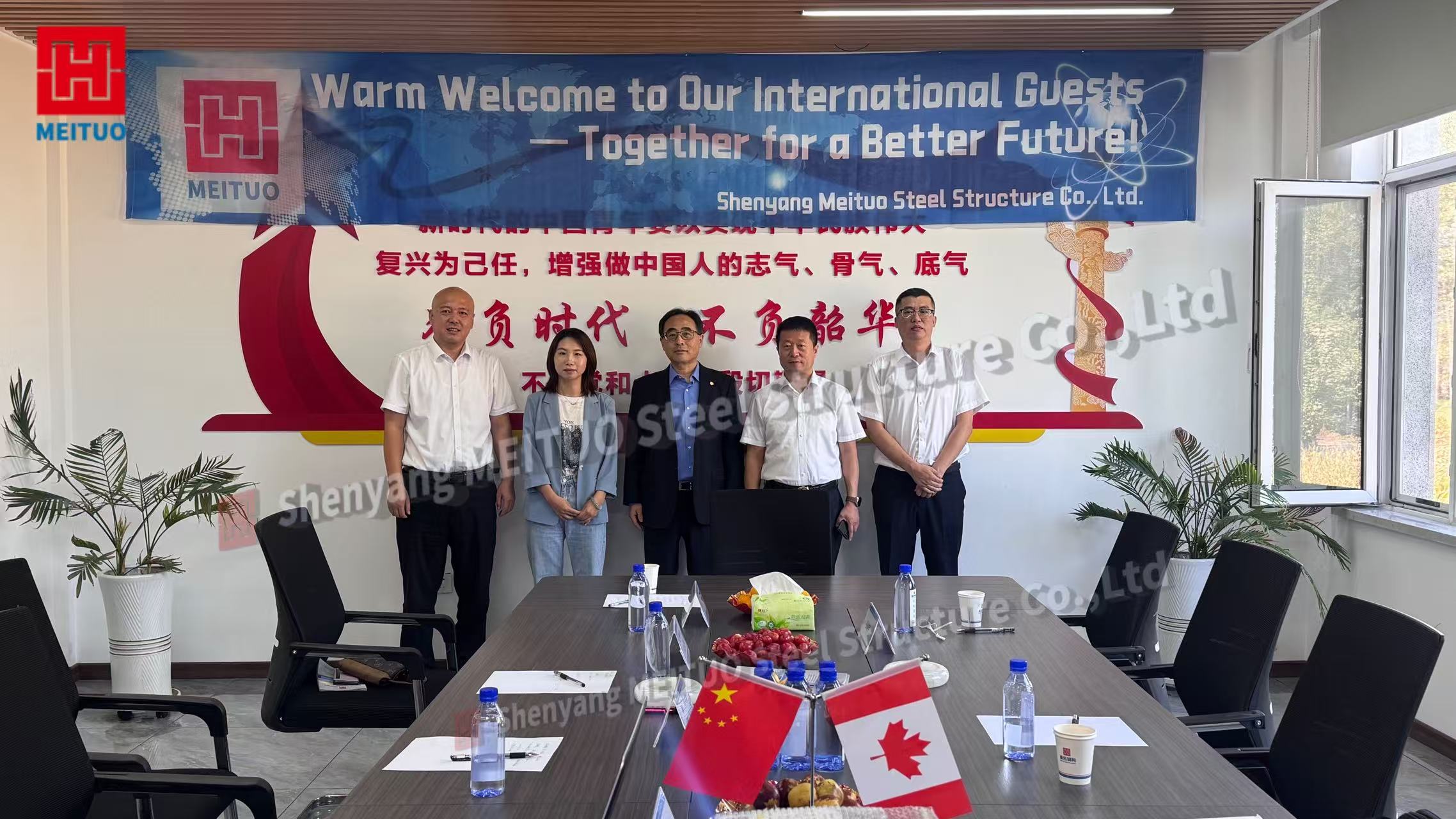
A Factory Visit with Purpose
The delegation arrived at 9:30 a.m., greeted by Meituo’s general manager, senior engineers, and representatives from the company’s international department. After a short welcome ceremony, the group was led into the heart of the production area.
What they saw impressed them. Gigantic beams were being cut by computer-controlled plasma machines, sparks lighting up the hall. Robotic welding arms moved with precision, joining plates into sturdy frames. At another station, inspectors checked weld seams with ultrasonic equipment.
One Canadian delegate whispered: “The scale here is larger than anything we’ve seen back home.”
The tour continued to the quality-control lab, where samples were subjected to pressure and fire-resistance tests. Engineers explained how each batch is documented, with data uploaded to a digital platform that can be shared with overseas clients.
By the time the group entered the company’s exhibition hall, the Canadian president was taking frequent notes. Models of completed projects lined the room: an aircraft hangar in Africa, a logistics hub in South America, and prefabricated housing units shipped to the Middle East. Each display told the same story—that steel structures, when produced efficiently, can adapt to diverse climates and standards.
Canada’s Growing Appetite for Steel Structures
Why would a Canadian association travel thousands of kilometers to a factory in Shenyang? The answer lies in shifting trends at home.
Canada’s construction sector has been reshaped by two forces: rapid urban growth and the push for sustainability. Cities like Toronto and Vancouver face a shortage of modern infrastructure, while provincial governments are under pressure to cut carbon emissions.
Data from the Canadian Construction Association shows that investment in steel-based projects has risen nearly 40% over the past decade. Prefabricated steel warehouses and modular residential complexes now account for a significant portion of new builds. At the same time, costs for locally fabricated steel components have risen by almost 15% in the last three years.
“Canadian developers cannot ignore the global supply chain anymore,” said a Toronto-based consultant familiar with the industry. “Partnerships with overseas steel structure factories are no longer optional—they are essential for competitiveness.”
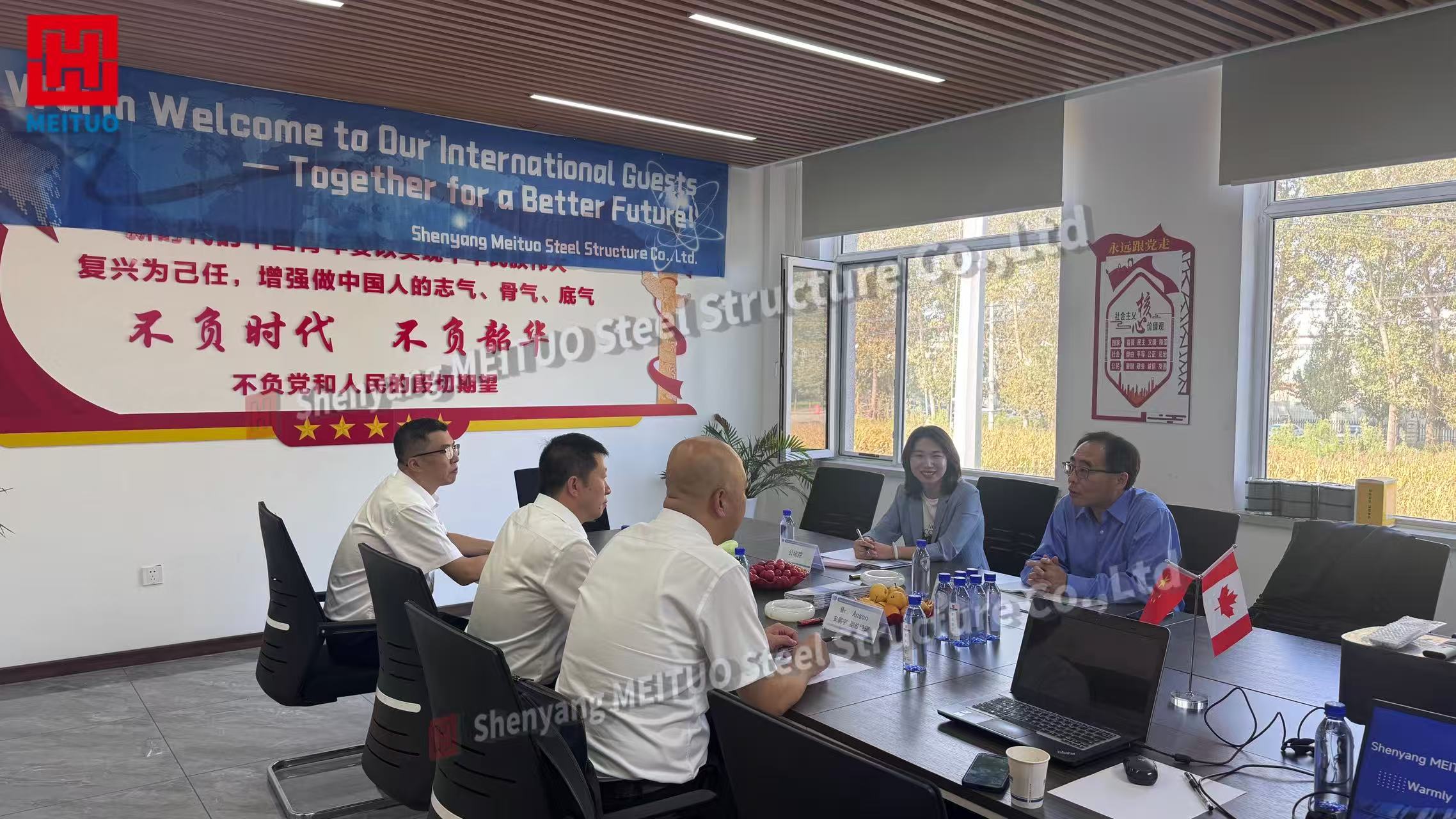
A Closed-Door Dialogue
After lunch, both sides sat down in a conference room overlooking the factory yard. The meeting lasted nearly three hours. According to company sources, the conversation covered four main themes:
Exports to Canada – Meituo could ship prefabricated beams, trusses, and panels tailored to Canadian codes.
Joint Development – The possibility of co-partnering on infrastructure projects such as logistics hubs and public facilities.
Sustainability Alignment – How Chinese manufacturing could meet Canada’s strict green-building requirements.
Risk Management – Addressing tariffs, shipping logistics, and regulatory approval.
At one point, the Canadian president emphasized the urgency: “Our market is ready. We are short of cost-effective suppliers who can deliver at scale. What we have seen here today suggests your company is prepared for that challenge.”
Meituo’s general manager responded carefully: “We respect Canadian standards. Our engineers are already studying your building codes. What we want is not just a one-time order, but a long-term relationship.”
Market Potential and Strategic Fit
Industry analysts believe the timing is right. The Canadian steel structure market is forecast to expand by around 6% annually through 2030. Demand is concentrated in three sectors:
Logistics & Warehousing: E-commerce growth has fueled the need for massive distribution centers across Ontario and Quebec.
Infrastructure Renewal: Bridges and municipal buildings, many built in the 1960s and 1970s, are reaching the end of their lifespan.
Residential Housing: Prefabricated steel modules offer speed and affordability at a time when Canada faces a housing shortage.
For Meituo, whose portfolio already includes exports to Africa and South America, Canada represents both a challenge and an opportunity. Unlike emerging markets, Canadian projects are tightly regulated and demand advanced compliance. But the payoff could be significant, establishing Meituo as a recognized brand in North America.
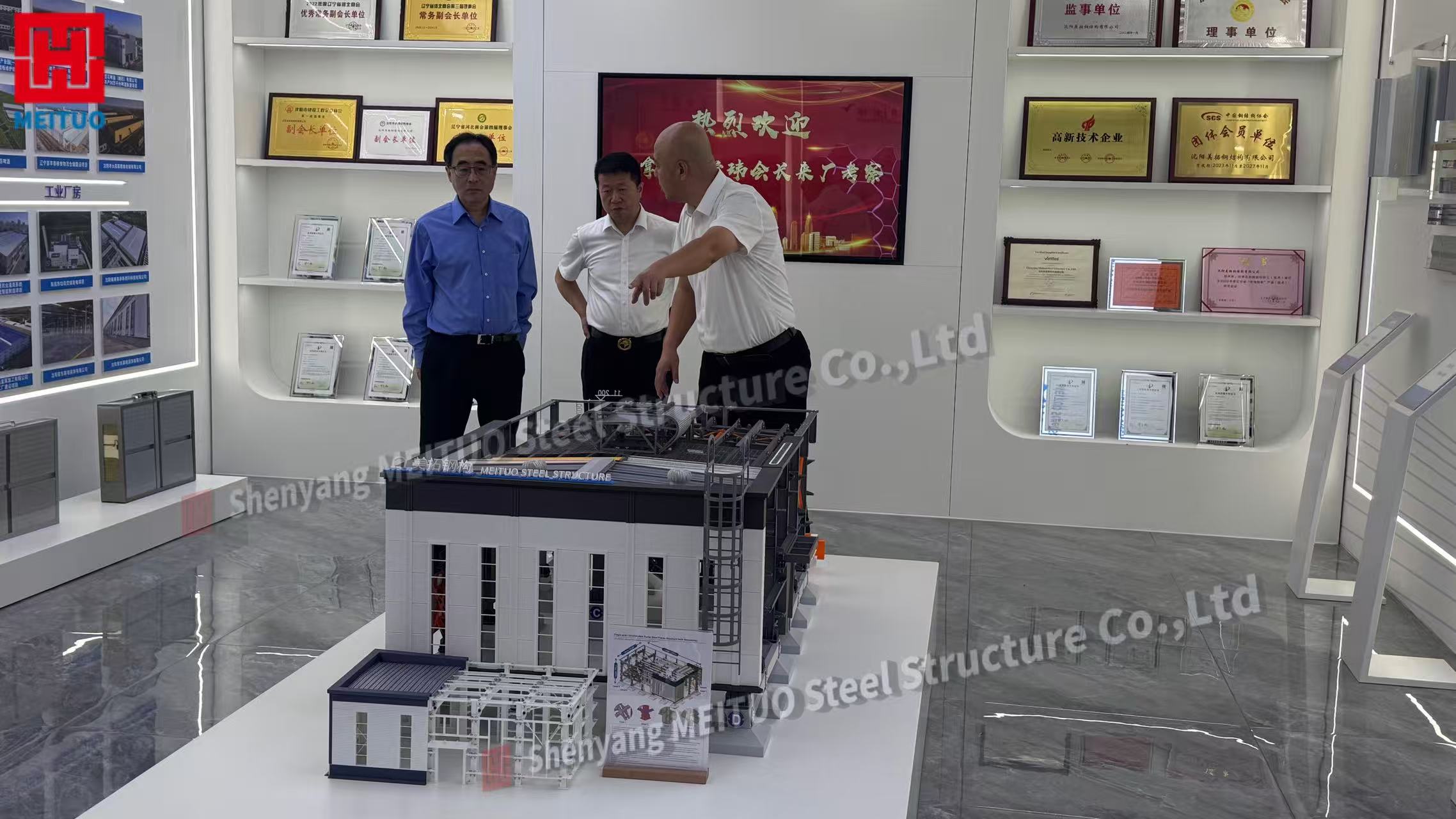
Strengths that Stood Out
Throughout the day, the Canadian delegation repeatedly highlighted three features of Meituo’s operation:
Integration: The ability to handle design, fabrication, and installation under one roof.
Technology: Automated production lines and digital tracking systems.
Experience: A track record of delivering to international clients under diverse conditions.
One delegate noted, “What struck us most was not just the machinery, but the coordination. Everything runs on schedule. That level of organization is what Canadian projects need.”
Building Trust for the Long Term
Beyond technology and cost, the visit was about trust. Delegates asked questions about delivery schedules, dispute resolution, and after-sales support. Company representatives answered with case studies from previous exports.
By late afternoon, as the meeting drew to a close, both sides agreed to form a working group to continue discussions remotely. A pilot project—possibly a mid-sized warehouse in western Canada—was floated as the first step.
“This is not the end,” the Canadian president concluded. “It is the beginning of a conversation that could reshape how we build in Canada.”
Broader Implications
The visit to Shenyang Meituo Steel Structure factory may seem like a routine business trip, but it reflects a wider shift. As construction costs rise and sustainability pressures mount, cross-border partnerships in the steel structure market are becoming a norm rather than an exception.
Observers say Canada’s openness to Chinese cooperation signals pragmatism. While trade tensions exist in some sectors, construction remains a field where both sides see mutual benefit.
Conclusion
In the fading light of Shenyang’s evening, the Canadian delegation departed the factory grounds with binders full of notes and clear impressions. For Meituo, the day underscored its ambition to play on a larger stage. For Canada, it opened the door to suppliers who can deliver speed, scale, and quality.
Whether the talks result in contracts remains to be seen. But one thing is certain: in the evolving world of global construction, the path between Shenyang and Canada is shorter than it once seemed.

